Module 3: Managing and Organizing Research
Managing and Organizing Research
Topic 1 – Chicago Manual of Style Citation
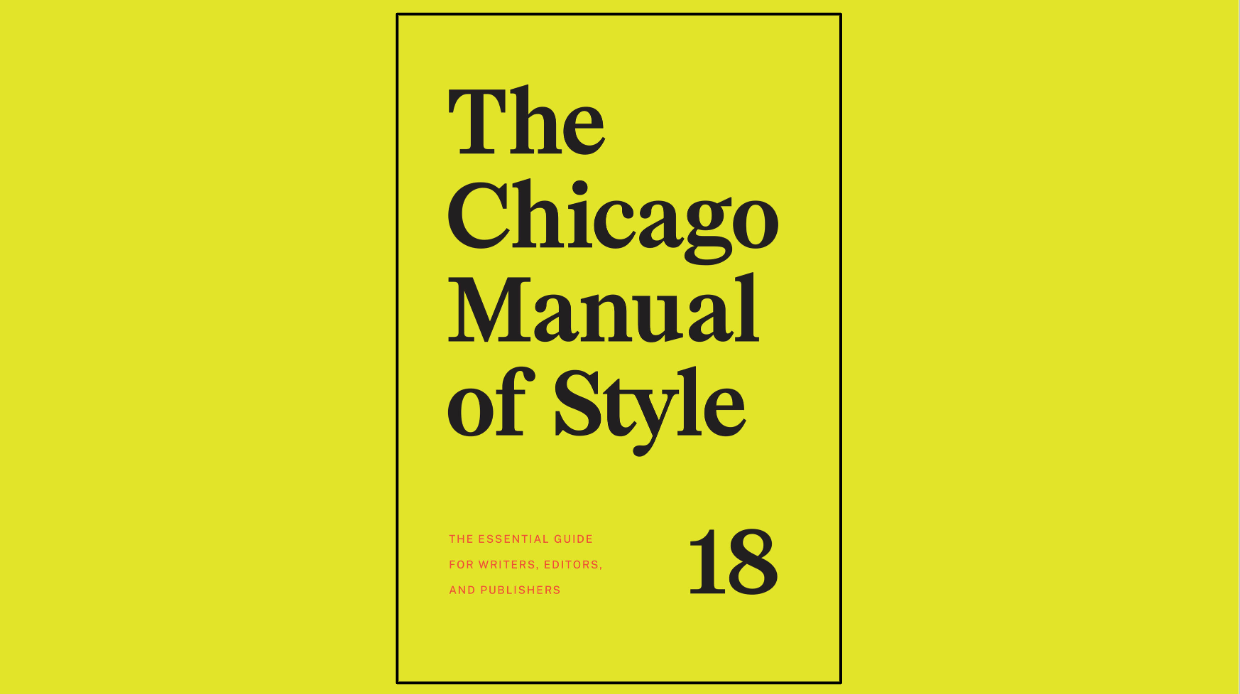
Image Source: University of Chicago Press
When you write up and present your research in term papers or assignments for courses; at conferences; in journal articles; in your dissertation, you must cite the sources you use in order to give credit to fellow researchers and so that others can replicate your work or follow up and refer to your sources for their own research. To help readers follow the citations in the easiest way possible, most fields of study settle on an agreed upon, common format—their citation style. Like many academic disciplines in the humanities and social sciences, the arts administration field usually uses the University of Chicago Press’s house style (the style they use in all their published books and articles), which is written up and documented in a huge reference book called The Chicago Manual of Style. Many writers and doctoral candidates keep a print copy on their desk because it is used so often; it’s also available to consult in full text online, to subscribers. You can access the full text online, available through the UK Libraries subscription, by looking up the title in InfoKat:
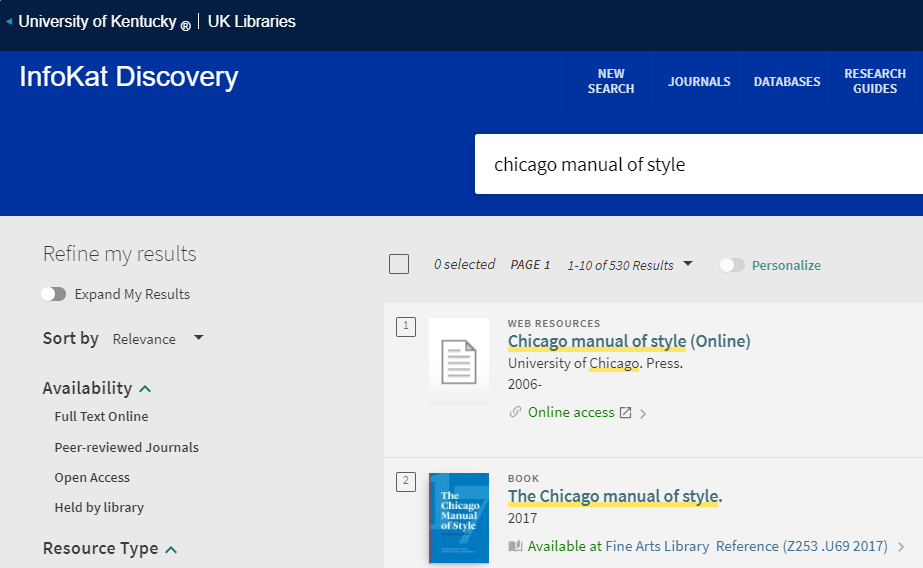
Image source: InfoKat screenshot from libraries.uky.edu, screenshot by Karyn Hinkle
If you have not explored the Chicago Manual of Style site before, or if you would like a refresher, spend some time touring their online site. For most academic writing purposes, their Citation Quick Guide is the most-used part of the whole project. It offers clear examples of how to format citations for practically any type of research material you may need to cite.
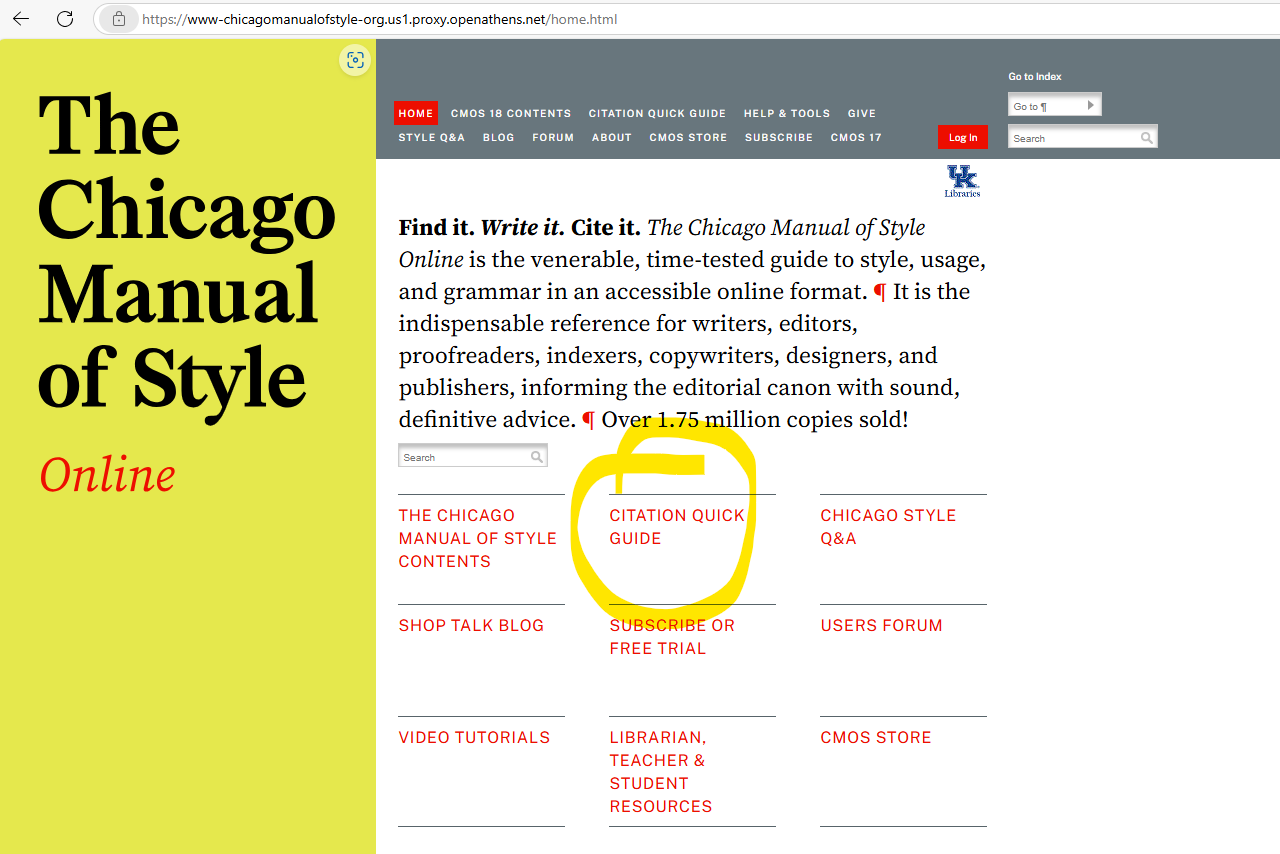
One last important point to note: the UK Department of Arts Administration uses the “Author-Date” format, not the Notes and Bibliography version. When you use the Citation Quick Guide for a class assignment, follow the “Author-Date” style.
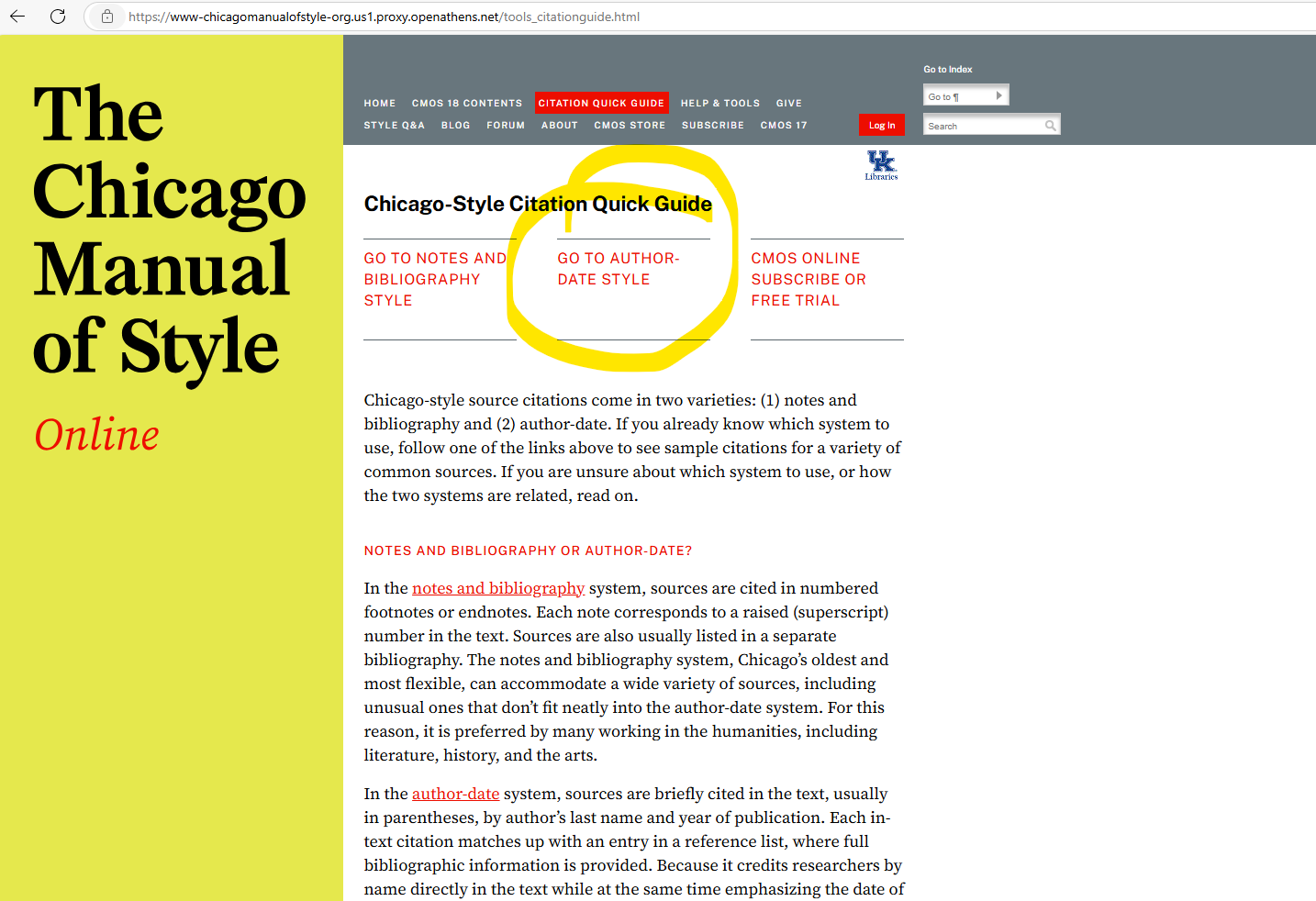
Let’s practice formatting a citation for a journal article by using the Chicago Manual of Style’s Author-Date format. Here are some search results from the UKL library search tool, InfoKat. Imagine you are interested in the first result, Yuha Jung’s article “Threading and Mapping Theories in the Field of Arts Administration,” and want to include a quote from it in your dissertation.
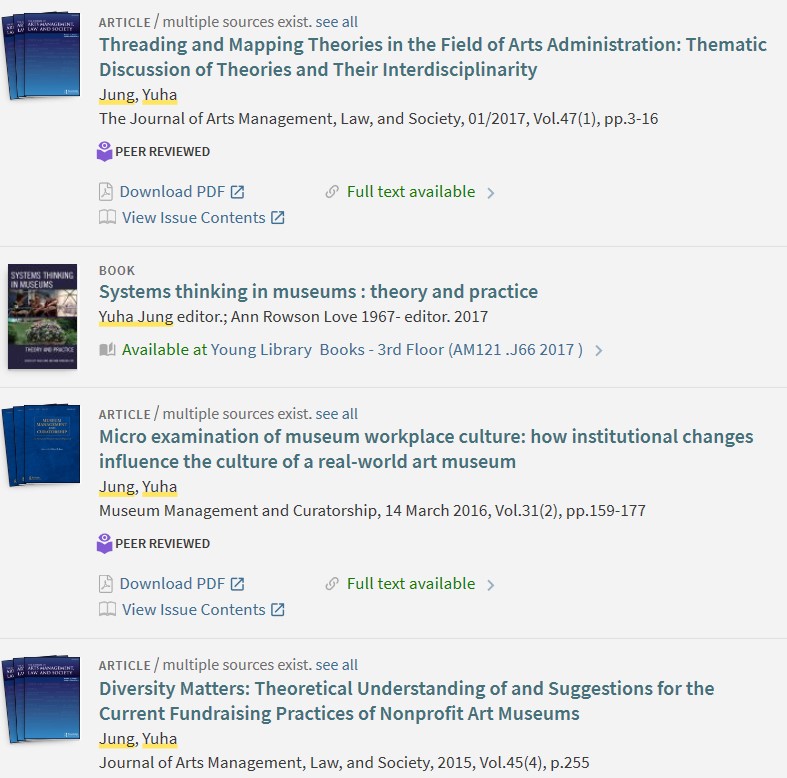
Here is a textual representation of the item as represented in its library search tool record, copied and pasted from the InfoKat website:
Threading and Mapping Theories in the Field of Arts Administration: Thematic Discussion of Theories and Their Interdisciplinarity
Jung, Yuha
The Journal of Arts Management, Law, and Society, 01/2017, Vol.47(1), pp.3-16
There are four important elements of the record which are needed in a Chicago Author-Date citation:
-
- the name of the author(s),
- the publication date,
- the title of the work,
- and the publisher’s publication information,
most of which is provided in the library search result record.
To craft a Chicago Author-Date style citation for the article, follow the template for journal articles on the Citation Quick Guide. You will move each element into its corresponding place, adding all the punctuation marks required by the style.
Here is the finished Chicago-style citation with each of those four important elements (author, title, date, publication info) sitting where it belongs according to the Chicago Author-Date style:
Jung, Yuha. 2017. “Threading and Mapping Theories in the Field of Arts Administration: Thematic Discussion of Theories and Their Interdisciplinarity.” The Journal of Arts Management, Law, and Society 47, no. 1: 3-16.
At the point in your text where you mention, quote from, or use the source, Chicago’s Author-Date style calls for a parenthetical in-text citation at the end of your sentence. The in-text citation for the Jung article would say (Jung 2017, xx) [xx being the page or range of pages where you are quoting from]. A full and complete citation for each item you quote with an in-text citation then appears in an alphabetized reference list at the end of your piece.
The exercises in this section’s activity will give you hands-on practice with Chicago’s bibliographic citation style, inviting you to dissect the records for items found in library catalogs or research databases, and then moving the appropriate pieces into place for a Chicago-style citation in your research.
Over the course of your degree, applying Chicago style and using the Author-Date format will be a common practice. However, there are many other citation styles in the world as well (including Chicago’s other format, the Notes & Bibliography style, which is used frequently in arts and humanities journals; other styles that are very common in the social sciences like APA style, which you may have used before; and other styles so esoteric they are used only by single journals for the articles they publish). Different styles simply use different elements of punctuation and list the four major elements of the work being cited (author, title, date, publication info) in a different order, a different “style.”
Outside Readings
To help switch between styles (perhaps you write a paper for class using one style, and a journal you submit a resulting article to requires a different one), many writers employ software where they can store a bank of their sources and use the software to output their citations in whatever style is required. This brings us to our second topic in this section on managing and organizing research: bibliographic management tools.
